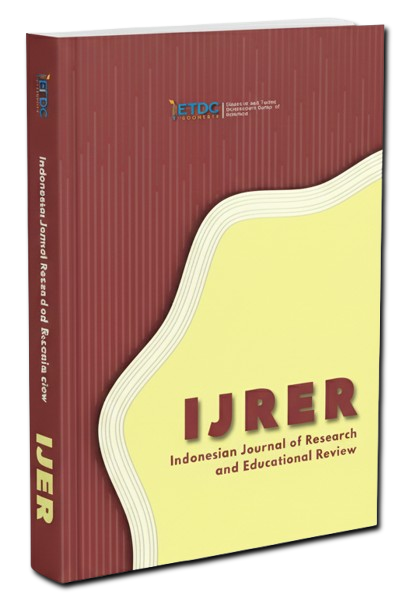The Effect of Increasing the Leadership of School Principals on the Performance of Education Staff in Wajo District
https://doi.org/10.51574/ijrer.v2i1.746
Keywords:
Education Staff, Performance, Leadership Of School PrincipalsAbstract
This research was conducted to find out: (1) the leadership of the heads of state vocational schools in Wajo district; (2) the performance of teaching staff at state vocational schools in Wajo district; and (3) whether there is a significant influence of principal leadership on the performance of state vocational education staff in Wajo district. The techniques used for data collection are documentation and questionnaires. The total population is 32 public vocational education staff in Wajo district. The collected data were processed using quantitative statistical analysis (percentage) and inferential statistical analysis (product-moment correlation) with a significance level of 5. The results of the data analysis showed that: (1) the leadership of the head of education at SMK Negeri in Wajo Regency is in a good category; (2) the performance of the State Vocational High School teaching staff in Wajo Regency is in the medium category; and (3) there is a significant influence of the principal's leadership on the performance of the State Vocational High School education staff in Wajo Regency.
References
Blankenberger, B., & Williams, A. M. (2020). COVID and the impact on higher education: The essential role of integrity and accountability. Administrative Theory & Praxis, 42(3), 404-423.
Blase, J., Blase, J., & Phillips, D. Y. (2010). Handbook of school improvement: How high-performing principals create high-performing schools. Corwin Press.
Butera, F., Batruch, A., Autin, F., Mugny, G., Quiamzade, A., & Pulfrey, C. (2021). Teaching as social influence: Empowering teachers to become agents of social change. Social Issues and Policy Review, 15(1), 323-355.
Fisher, E. A. (2009). Motivation and leadership in social work management: A review of theories and related studies. Administration in social work, 33(4), 347-367.
Harry, W. (2007). Employment creation and localization: the crucial human resource issues for the GCC. The International Journal of Human Resource Management, 18(1), 132-146.
Komalasari, K., Arafat, Y., & Mulyadi, M. (2020). Principal’s management competencies in improving the quality of education. Journal of social work and Science Education, 1(2), 181-193.
Krowin, M. M., & Merentek, R. M. (2019). Management of Post-Certification Primary School Teacher Performance in The Minahasa District Education Office Environment. In International Conference Primary Education Research Pivotal Literature and Research UNNES 2018 (IC PEOPLE UNNES 2018) (pp. 107-111). Atlantis Press
Kumar, V., & Dhiman, S. (2020). Happiness and workplace well-being: Transformational leadership and the role of ethical and spiritual values. The Palgrave handbook of workplace well-being, 1-44.
Mohiuddin, M., Hosseini, E., Faradonbeh, S. B., & Sabokro, M. (2022). Achieving human resource management sustainability in universities. International Journal of Environmental Research and Public Health, 19(2), 928.
Winston, R. B., Creamer, D. G., & Miller, T. K. (2013). The professional student affairs administrator: Educator, leader, and manager. Routledge


























